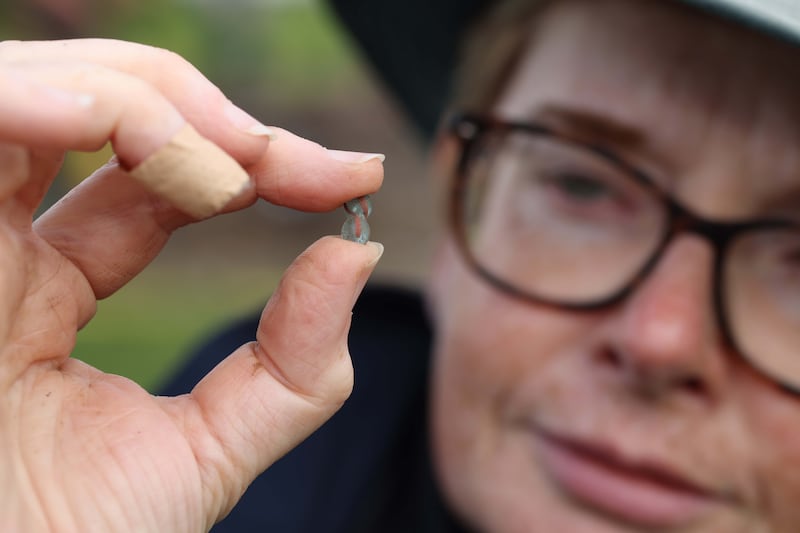A ringfort overlooking Galway Bay was a settlement for high-status rulers and nobles in Ireland’s early medieval period, archaeologists have determined.
Rathgurreen Ringfort, in the Maree area of Co Galway, has been described as an impressive, “high-status” settlement that could date anywhere from the 5th to 12th century AD, with evidence of contact with Rome, Scotland, France and Scandinavia, possibly including the trade of valuable purple dye.
An eight-week archaeological excavation, directed by Dr Michelle Comber and Dr Noel McCarthy of the discipline of archaeology at University of Galway, determined the ringfort was the settlement of a king or a lord.

The ringfort, on a panoramic site with views south to the Burren, west to the Atlantic and north across Galway was first investigated and proposed as a high-status settlement by Prof Michael Duignan, then chair of archaeology at the university, in the late 1940s.
Excavations now suggest that parts of the site are potentially 1,000 years older than previously thought.
A team of professionals, students and volunteers took part in the archaeological dig this summer on a section of the 100m diameter ringfort.
Dr Comber, lecturer in archaeology at University of Galway, said it could be asserted with some certainty that Maree is an ancient territory. There are up to 40 ringforts in the area, most of which are only a third the size of Rathgurreen, as well as a number of earlier prehistoric sites.
The name Mearaí (Maree) appears in several early legends, often associated with warriors or other figures bearing that name. Dr Comber said the team’s research confirms that Rathgurreen was the home of a noble family – “hence the description as high-status”.
“But the story is much deeper and richer. We have evidence of continuity and change at this site – a settlement that possibly dates back to the Iron Age, that was later developed into a very fine ringfort. A new home with links to ancestors would certainly have been very attractive to early medieval nobility.”

The archaeology team found a number of glass beads, some coloured blue and another turquoise and red. These have parallels in other parts of Ireland and Scotland in the Iron Age – the era that immediately precedes the early medieval period.
The dig has also confirmed the presence of early medieval pottery from northern France and amber beads likely connected with Scandinavian trade routes used by the Vikings.
Evidence of the manufacture of purple dye at Rathgurreen comprises the remnants of dog-whelk shellfish that were processed at the settlement to produce the rare, and therefore valuable, colouring.
Dr Comber said: “We are working in an ancient high-status settlement located roughly midway along the Atlantic seaboard. In no sense, though, would it have been viewed as ‘wild’ or isolated – on the contrary it was part of a wider community and had links with other parts of Ireland, Scotland and mainland Europe. The adjacent coast provided relatively easy access to the outside world – seaways were the motorways of their day.
“The big takeaway from this site is that a place like Galway had a wider significance in the past, and that significance translates into the present. This one site has many tales to tell and roles to play. People come to the west of Ireland and they think it’s isolated and remote, but Maree’s ancient remains tell us that western Ireland was not cut off from the wider world, geographically or culturally.”
The modern excavations began with geophysical surveys that provided hints of what might be present beneath the grass. In conjunction with the results from the 1940s, these helped guide the work this summer.
The excavation marks the launch of a new research project exploring land use through time on the Maree peninsula in Galway with the university team hoping to continue digs at the site in 2026 and to pursue other locations in the area in future years.
The larger project is supported by the Discovery Programme: Centre for Archaeology and Innovation Ireland. It also involves local, national and international communities, developing a conservation management plan for Rathgurreen in conjunction with landowners and ecological and archaeological experts. It is funded by the National Monuments Service Community Monuments Fund via Galway County Council.












